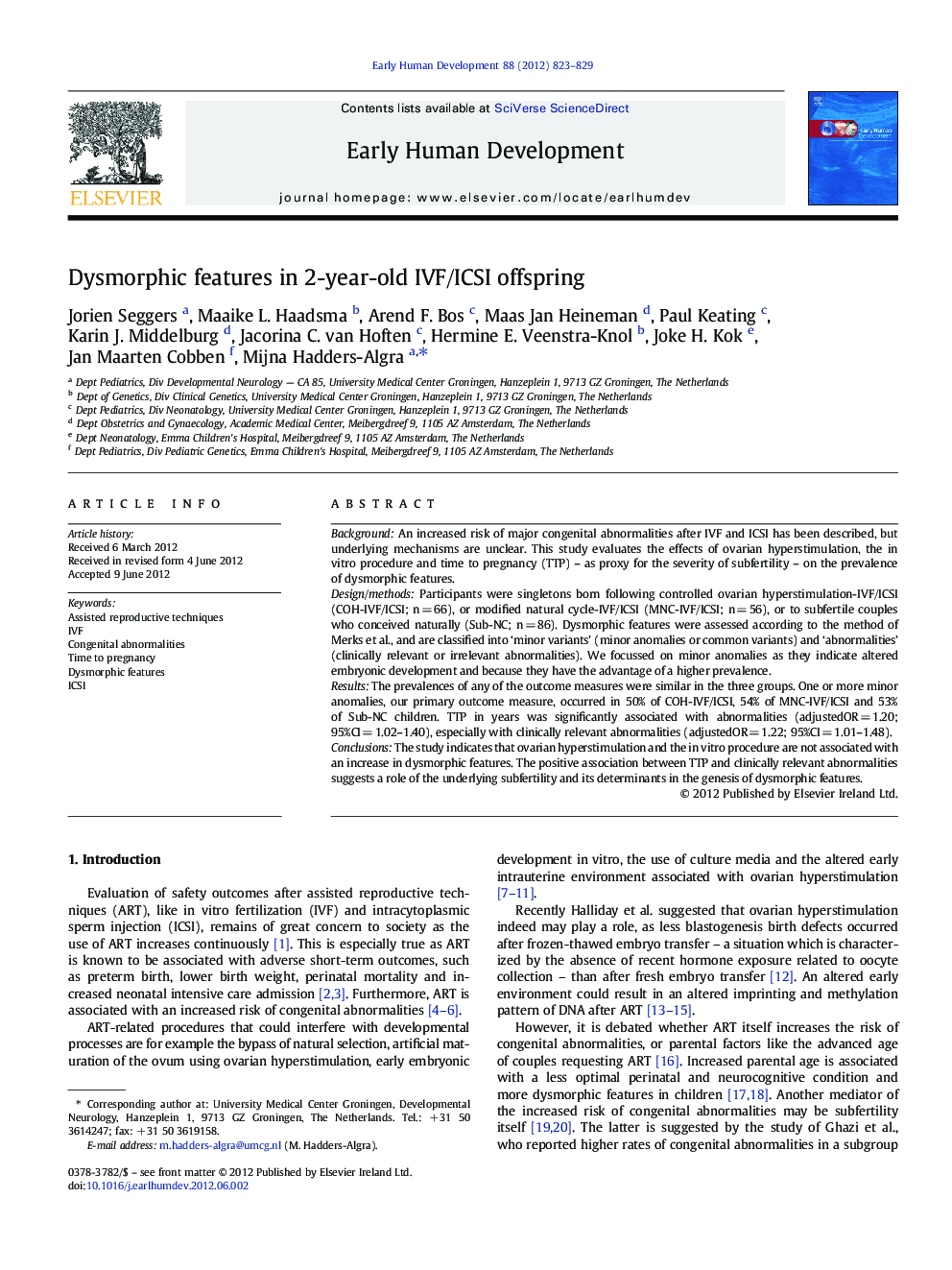| Article ID | Journal | Published Year | Pages | File Type |
|---|---|---|---|---|
| 3918372 | Early Human Development | 2012 | 7 Pages |
BackgroundAn increased risk of major congenital abnormalities after IVF and ICSI has been described, but underlying mechanisms are unclear. This study evaluates the effects of ovarian hyperstimulation, the in vitro procedure and time to pregnancy (TTP) – as proxy for the severity of subfertility – on the prevalence of dysmorphic features.Design/methodsParticipants were singletons born following controlled ovarian hyperstimulation-IVF/ICSI (COH-IVF/ICSI; n = 66), or modified natural cycle-IVF/ICSI (MNC-IVF/ICSI; n = 56), or to subfertile couples who conceived naturally (Sub-NC; n = 86). Dysmorphic features were assessed according to the method of Merks et al., and are classified into ‘minor variants’ (minor anomalies or common variants) and ‘abnormalities’ (clinically relevant or irrelevant abnormalities). We focussed on minor anomalies as they indicate altered embryonic development and because they have the advantage of a higher prevalence.ResultsThe prevalences of any of the outcome measures were similar in the three groups. One or more minor anomalies, our primary outcome measure, occurred in 50% of COH-IVF/ICSI, 54% of MNC-IVF/ICSI and 53% of Sub-NC children. TTP in years was significantly associated with abnormalities (adjustedOR = 1.20; 95%CI = 1.02–1.40), especially with clinically relevant abnormalities (adjustedOR = 1.22; 95%CI = 1.01–1.48).ConclusionsThe study indicates that ovarian hyperstimulation and the in vitro procedure are not associated with an increase in dysmorphic features. The positive association between TTP and clinically relevant abnormalities suggests a role of the underlying subfertility and its determinants in the genesis of dysmorphic features.
